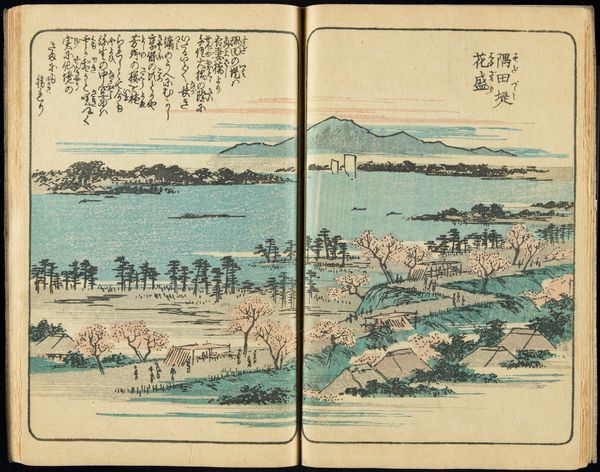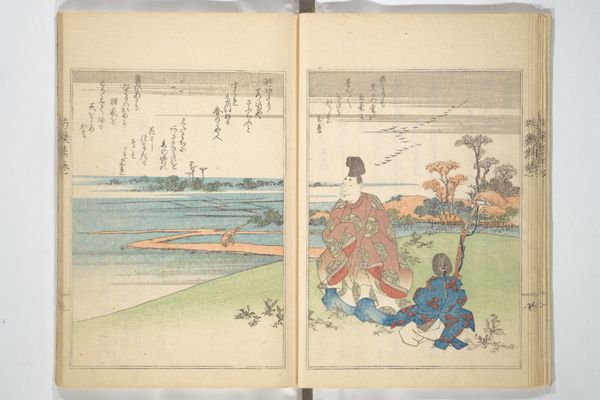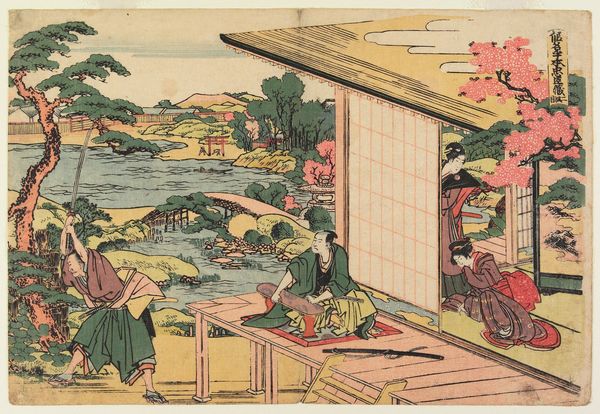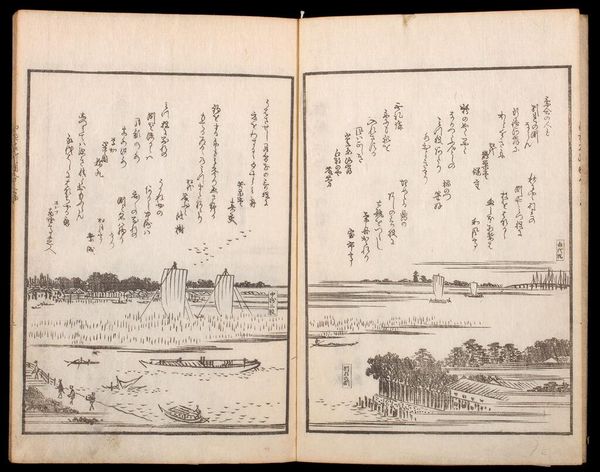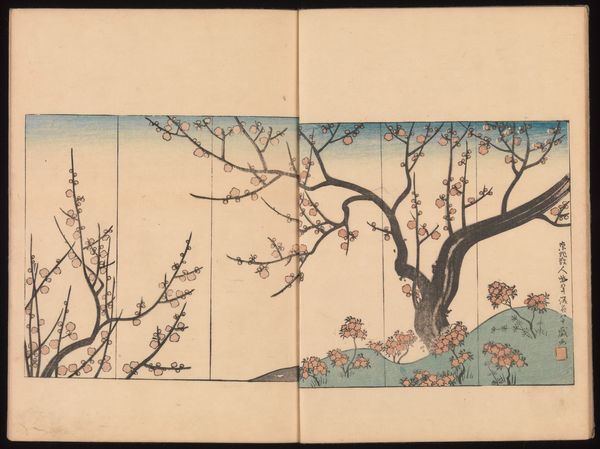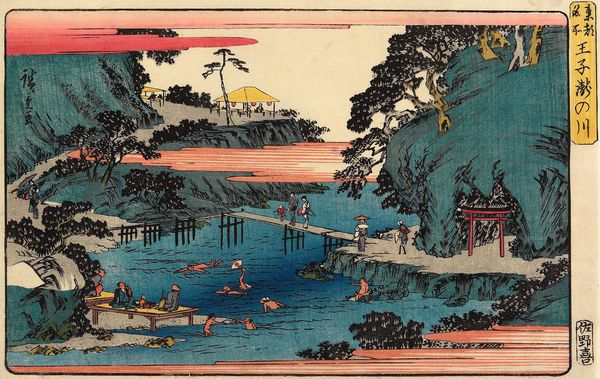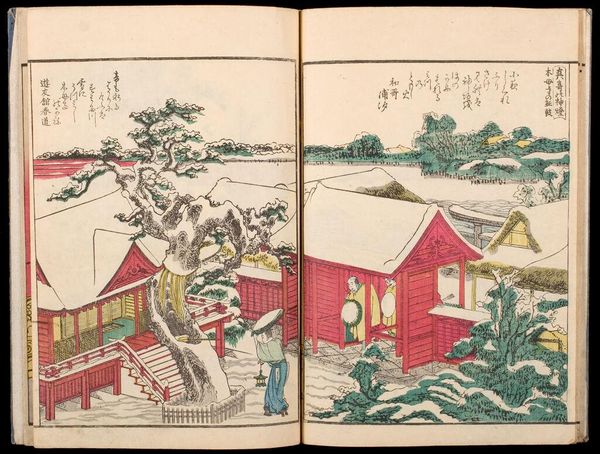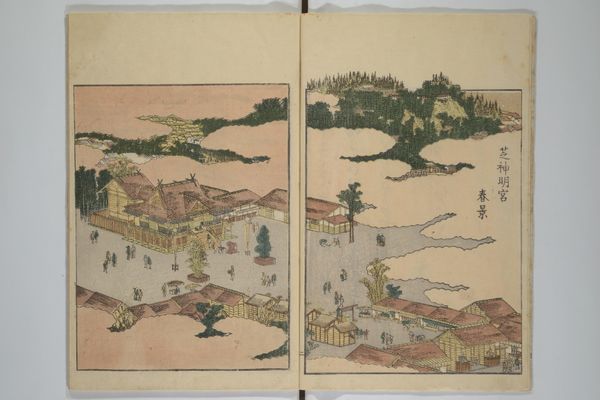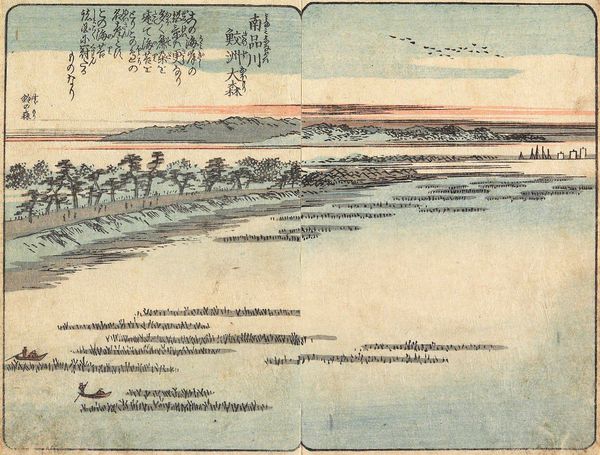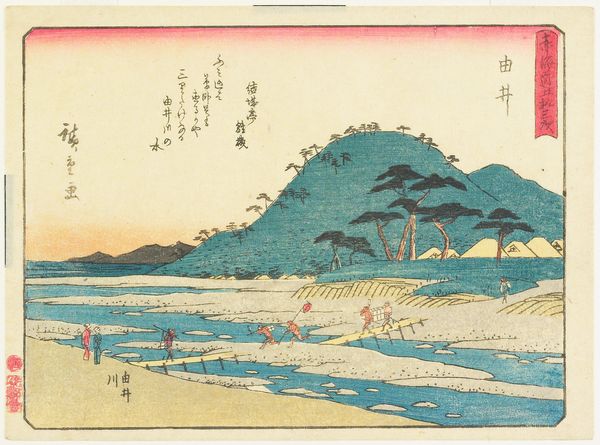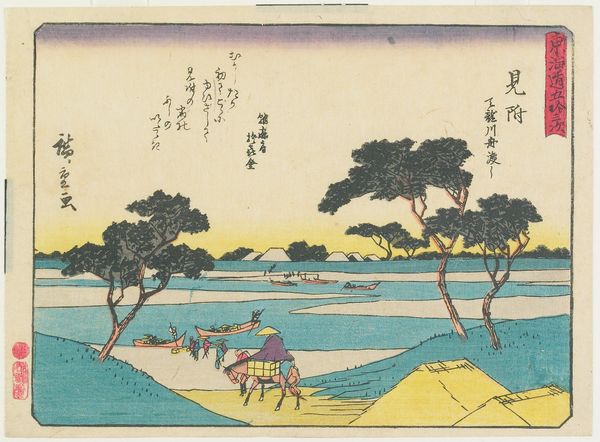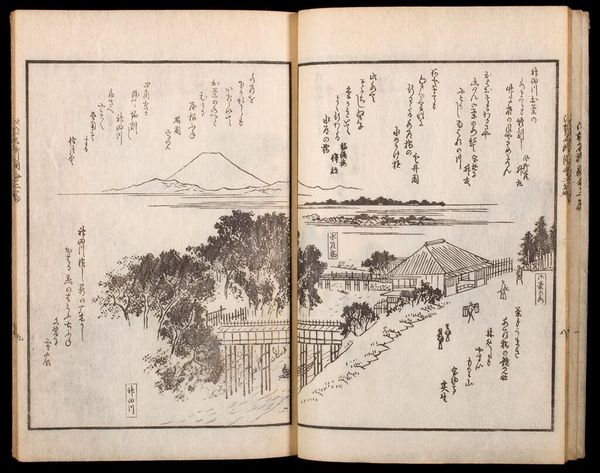
Illustrated Book -Souvenir of Edo- vol. 2(west) 1850
0:00
0:00
print, woodblock-print
#
pen drawing
# print
#
book
#
asian-art
#
landscape
#
ukiyo-e
#
woodblock-print
#
line
Dimensions: 7 1/16 x 4 13/16 x 3/16 in. (18 x 12.3 x 0.5 cm) (outer frame)
Copyright: Public Domain
Curator: Here we have Utagawa Hiroshige’s “Illustrated Book - Souvenir of Edo - vol. 2 (west),” dating back to 1850. This book utilizes the technique of woodblock printing to showcase landscapes and scenes from Edo, what we know today as Tokyo. Editor: The pale colors create a tranquil feeling, like a hazy summer afternoon. The composition is interesting, dividing the book’s pages into distinct landscape vignettes. I wonder, what sort of woodblock printmaking did Hiroshige employ for these types of works? Curator: Hiroshige's use of woodblock printing in books like this reveals much about the Edo period’s culture. Consider the collaborative aspect, a single print required the skills of the artist, the wood carver, the printer, and publisher, which illustrates the intersection of craftsmanship and commerce. Furthermore, these souvenirs reinforced the urban identities being forged through increased trade. Editor: Yes, it’s easy to get lost in the finished image and forget about the layers of labor, from the trees felled for the blocks, the artisans carving each delicate line, and the pigments themselves – were they locally sourced, or did they come via trade routes? The materiality of it all really anchors it to its time. Curator: Precisely, and what role do you think these images served for those unable to travel to Edo? This "souvenir" provided access, almost a form of social currency tied to the cultural significance of experiencing Edo. Editor: I'm really intrigued by the stark, minimalist aesthetic. The lines and flat planes draw my attention to the textures –the handmade paper, the subtle variations in ink density… It feels so grounded. I wonder about the ratio of handwork versus industrial techniques? Curator: It highlights how art creates social narratives, shaping perceptions of Edo then and continuing to influence our understanding today. This book isn’t merely a depiction of landscapes but evidence of complex social systems. Editor: The blend of natural landscape, skilled artistry, and economic factors that converged to create this single illustrated book is quite fascinating. It speaks to a society in transition. Curator: Indeed, it prompts us to reflect on how art functions as both a mirror and a marker of its time, subtly but surely directing the viewer's perspective.
Comments
No comments
Be the first to comment and join the conversation on the ultimate creative platform.
